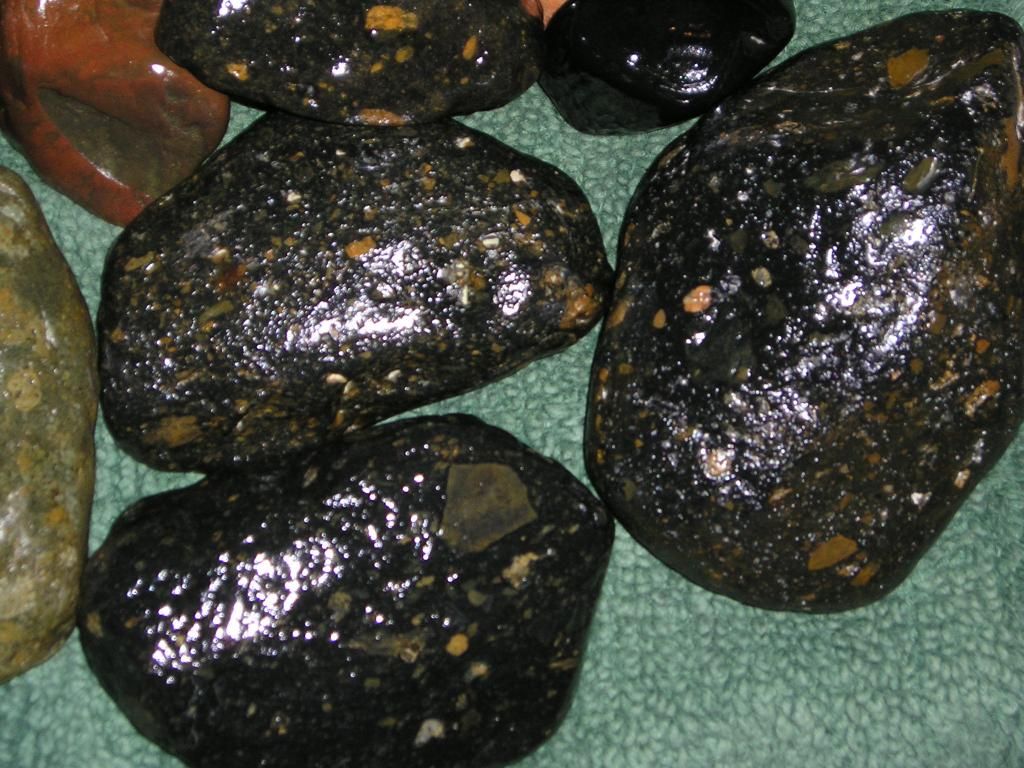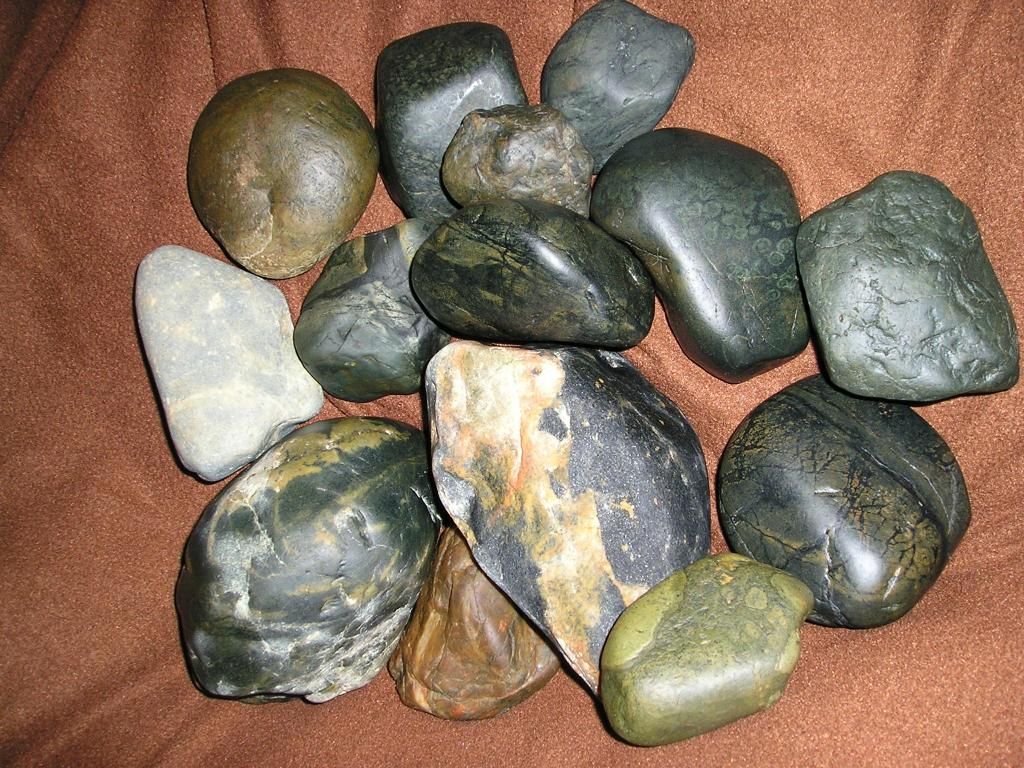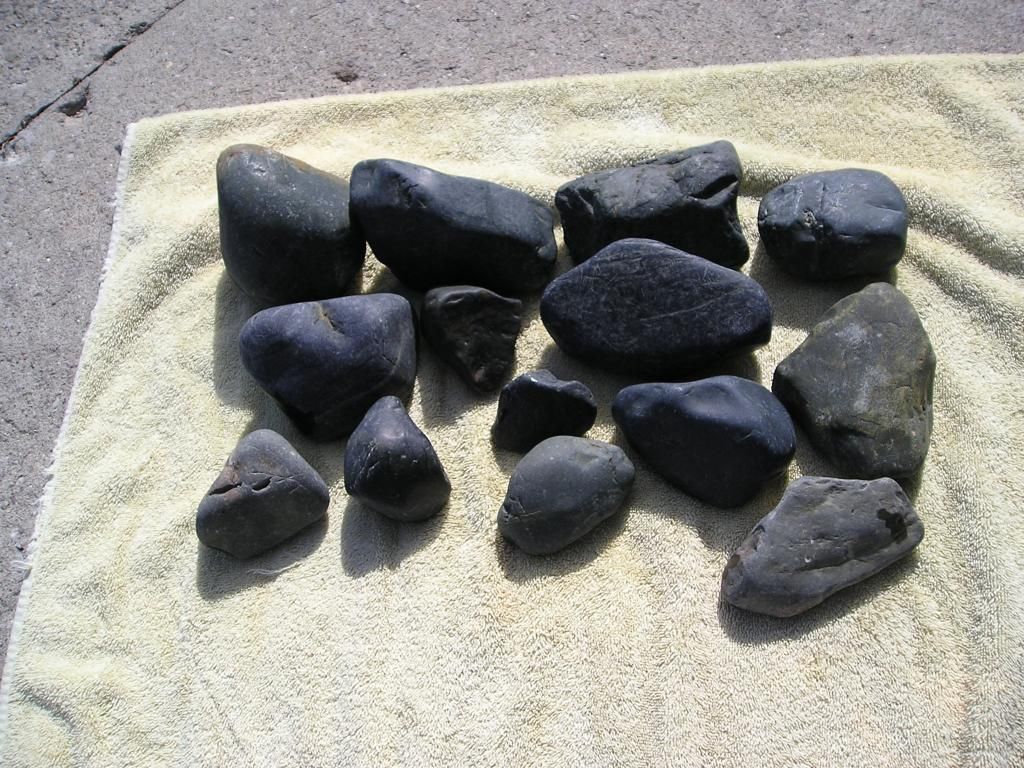Post by snowmom on Nov 12, 2014 17:15:44 GMT -5
All summer long focusing on jade, looking for green, blue-ish, and black dense tough rock. You have all heard about it and helped me
in my jade quest. I have learned so much, thanks to everybody here and all your help! I have been reading up on the new topic of Meteor impact
rock and a chance find on a page where it referred to impactite along with obsidian set off a chain of thought. The page talked about pitchstone.
Hmm, sounds like it should be made of tar, right? Well, pitch stone is evidently decomposing obsidian, and it looks and feels sort of like bitumen/asphalt.
All those wonderful black rocks I have been finding (and some green ones too) have had a thick rubbery like feel to them, not the waxy feeling so often
described with jade or jaspers. I had been swiping them with mineral oil and rubbing them with a micro fiber cloth to bring back the original color, and it also
made the rocks feel less rubbery made them look deep shiny black instead of being the color of an ageing rubber inner tube, complete with white powdery/felt looking
areas. When I rubbed the rocks down I noticed that they charged the micro fiber cloth and even at one point remarked how they must have as much silica as glass.
Bells still didn't go off. But you have guessed it , haven't you? I believe the rocks I am finding are melt glass from meteor impact. Here is my reasoning:
In the last few days I found onaping impact glass from the Sudbury Meteor impact on the beaches where I have found these rocks. It has the same rubbery feel
to the matrix. I had collected a couple of the onaping glass and had a friend cut it earlier, not knowing what it was. The inside is indeed like glass, but has inclusions..
very neat stuff. With my eyes opened to the possibility of impact matter, I hit the beach for the last 2 days and found a great deal of what had been overlooked
before. I found melt glass in greens, blue ish colors, mixed rock in all stages of melt as inclusions or as partially melted matter, or swirled and blended to make green, cream, or gold or black swirls. I believe the black rocks I was focusing on are melted basalt, schist, and other rock. Some have what seems to be like biotite inclusions
as well as all sorts of quartz, epidote, etc etc. It is there in all colors, I had just been focusing on the black and green. The rocks in this picture are ones you had seen before
these are rocks I picked up the past 2 days, onaping is the rough looking stuff with the inclusions that look like porphyry but are actually melted bits of rock of many kinds in the black rubbery feeling matrix. The second picture shows a variety of rocks all with that same rubbery feeling matrix.
This material is extraordinarily dense and varies a bit in density and composition, or so those of you who have been helping me on my jade project have told me.
It is my understanding that impact glass was made under tremendous pressure, that in the case of the Sudbury impact the pressure was equivalent to many times
the power unleashed by an atomic bomb. that would make the stuff dense alright. And since the original even was 1.85 billion years ago, I guess the glass might have deteriorated some, making it eligible to be called pitchstone.
I should comment that these are still relatively rare on the beach compared to the granites and the plain black, brown, quartz , and limestone rocks, and they require a good bit of hunting . I know 'the look" of that rubbery blue black matrix anywhere after searching for it all summer, but I will have to learn what the other colored impact rock looks like, as well now! (having fun!)
so I think that might be what we are looking at- its not jade, but it still has my attention. Am I on the right track?
Your input welcome! If I am barking up the wrong tree, I want to know it!


















